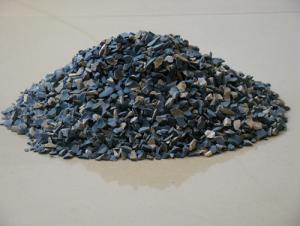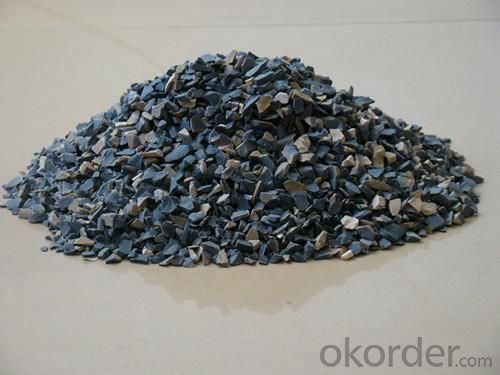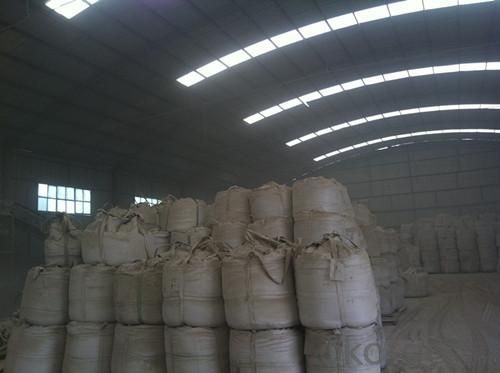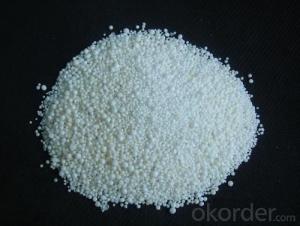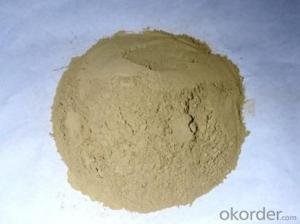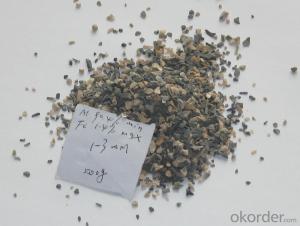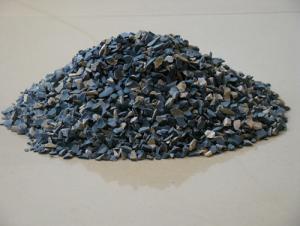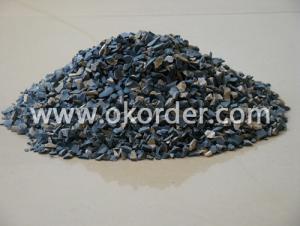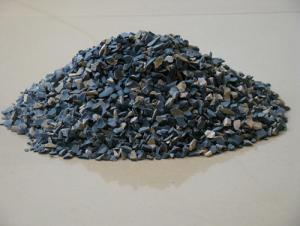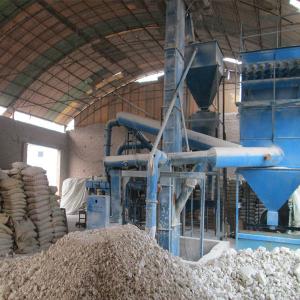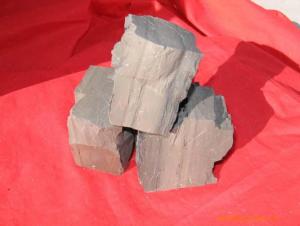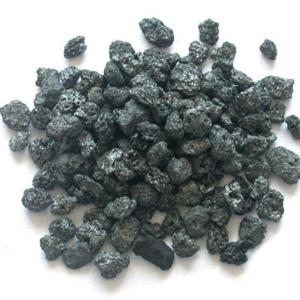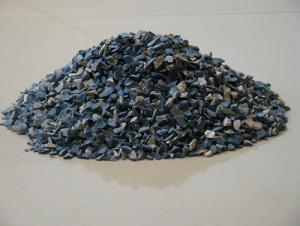Raw Materials for Refractory:Calcined Bauxite Shaft Kiln Al2O3 80%
- Loading Port:
- China Main Port
- Payment Terms:
- TT or LC
- Min Order Qty:
- 50 Metric Ton/Metric Tons m.t.
- Supply Capability:
- 20000 Metric Ton/Metric Tons per Month m.t./month
OKorder Service Pledge
OKorder Financial Service
You Might Also Like
Quick Details of Calcined Bauxite Shaft Kiln Al2O3 80% :
Place of Origin:China mainland
Material:Alumina block
Al2O3 Content(%):80%min
Refractoriness(Degree):1770℃<Refractoriness<2000℃
Shape:Block
Specifications of Calcined Bauxite Shaft Kiln Al2O3 80% :
|
Al2O3 |
80%min | ||
|
Fe2O3 |
3.0%max | ||
|
TiO2 |
4.0%max | ||
|
CaO+MgO |
0.5%max |
|
|
|
K2O+Na2O |
0.3%max |
|
|
|
B.D. |
2.80g/ccm min. | ||
Size:All sizes according to customers’requirements
Standard:Industry standards
Packaging & Delivery of Calcined Bauxite Shaft Kiln Al2O3 80%:
Packaging details:1mt big bag or according to customers’ requirements
Delivery:7-15 work days after the order is confirmed
Competitive Advantages:
High Heat-resistance.
High Purity & Good Quality.
Timely delivery & service
Good company reputation
Competitive Price & Reputable Supplier.
Usage/Applications:
1.Aluminium industry. Used in national defense, aerospace, automotive, electronics, chemical industry, daily necessities, etc.
2. Precision casting. Alumina clinker made after the mould precision casting processed into fine powder. Used in military industry, aerospace, communications, instrumentation, machinery and medical equipment department.
3.Refractory products. High bauxite clinker refractoriness is as high as 1780, chemical stability strong, and good physical properties.
4.Aluminum silicate refractory fiber. With light weight, high temperature resistance, good thermal stability, low thermal conductivity, heat capacity is small and the advantages of resistance to mechanical shock. Used in iron and steel, nonferrous metallurgy, electronics, petroleum, chemical, aerospace, atomic energy, defense and other industries.
5. In magnesia and bauxite clinker as raw materials, add the appropriate binder, used for pouring ladle whole ladle lining has particularly good effects.
6.Manufacture alumina cement, abrasive materials, ceramic industry and chemical industry can be aluminum of various compounds.
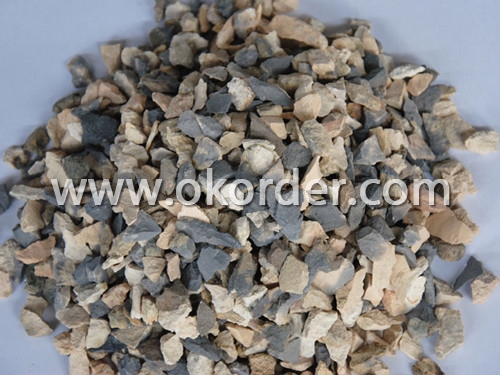

- Q: What is the difference in the nature between the refractory material and thermal?insulation?material
- thermal?insulation?material is a material which has a strong impedance to the heat flow. the nature of the material requires that the material can isolate the delivery of thermal, and the low heat conductivity coefficient and expansion coefficient of the non-metal material.refractory is good in heat resisitance and chamical erosion but not high temperature resistance. Requirements on nature is still in high temperature.
- Q: what's the fireproof levels of fireproof and thermal inuslation matertial?
- What are the fireproof levels of fireproof and thermal inuslation matertial on the market? how to divide the fireproof levels of fireproof and thermal insulation material?
- Q: What kind of refractory materials should be used for the intermediate frequency furnace to smelt manganese?
- I’d like to make supplements to upstairs that aluminum silicate refractory materials should be needed considering heat insulation.
- Q: What substitutes are available for high-end refractories in addition to zircon sand?
- The composite sand powder can effectively replace zircon sand, with the same operation process, less operation time and environmental protection
- Q: What are the types of advanced refractory?
- Divided into ordinary and special refractory two categories. Common refractories by chemical properties into acidic, neutral and alkaline. Special refractory are divided by the high temperature oxide, refractory compounds and high-temperature composite materials by its compositions. according to refractoriness it can be divided into ordinary refractory products (1580 ~ 1770 ℃), advanced refractory products (1770 ~ 2000 ℃) and premium refractory products (2000 ℃ above). The article can be divided into blocks (standard bricks, shaped bricks, etc.), special shape (crucible, sagger, pipe, etc.), fibrous (aluminosilicate, zirconia and boron carbide quality, etc.) and irregular shape (refractory clay, pouring materials and ramming mixes, etc.) According to the sintering process is divided into sintered products, cast products, melt blown products. The appearance is shaped or amorphous according to pH it can be divided into acidic, neutral and alkalinity according to basic operation mode, there are castable refractory ramming spraying materials, impressionable plastic material, coating. according to different components, there are clay, high alumina, corundum, spinel, magnesia, magnesium, calcium, magnesium aluminum quality,magnesia-chrome, silicon, etc.
- Q: What is the main material of fireproof wooden door?
- Fireproof wooden door has a lot of materials! including imported timber decorative effects: utilizing the diversity and easiness to cut of the timber, with all the decorative characteristics of the timber. Material selection features, door frames: Using high-quality hardwood, such as imported miscellaneous wood, camphorwood, lauan, hemlock, etc., insetting fire and smoke proof adhesive tape
- Q: I am a refractory material manufacturer, sold products, money is always not back, anxious to die, what is the way?
- Many manufacturers are facing the same problem, difficult to find the order, order the payment contract is more difficult, it is difficult to have binding, the better solution is to seek third party secured transactions, see the whole production or see full delivery
- Q: Are the rubber insulation materials are refractory materials?
- Compared with the fireproofing properties, the main thermal insulation properties of level B1 will be carbonized and drop when it is over 200 degree. <p class="answer-refer mt-10 f-light-gray" accuse="aRefer"> Reference: It is provided from technicians of Guangzhou Ou Fu construction materials: The answer that has been got:
- Q: Is it necessary for the frame of glass fireproof door to be crammed with fire-proof material?
- Close the door , and check if the gap is normal, whether the hole and the door leaf are in the same plane, and whether the door leaf has tendency to fall down. Fire resistance steel door——means that use a cold rolled steel sheet as door frame, door plank and framework, and stuff a door leaf with incombustible material.
- Q: Can anyone tell me what is the material of which the mould for refractory is made?
- I can make the mould and give you a discount. If necessary, you can contact me at 261240643 (qq).
1. Manufacturer Overview
| Location | Tianjin,China |
| Year Established | 2006 |
| Annual Output Value | Below US$1 Million |
| Main Markets | Mid East;Western Europe;Japan;North America |
| Company Certifications | The Authentication certificate of Quality Management system |
2. Manufacturer Certificates
| a) Certification Name | |
| Range | |
| Reference | |
| Validity Period |
3. Manufacturer Capability
| a) Trade Capacity | |
| Nearest Port | Tianjin |
| Export Percentage | 61% - 70% |
| No.of Employees in Trade Department | 50 People |
| Language Spoken: | English;Chinese |
| b) Factory Information | |
| Factory Size: | Above 300,00 square meters |
| No. of Production Lines | Above 5 |
| Contract Manufacturing | Design Service Offered |
| Product Price Range | Average |
Send your message to us
Raw Materials for Refractory:Calcined Bauxite Shaft Kiln Al2O3 80%
- Loading Port:
- China Main Port
- Payment Terms:
- TT or LC
- Min Order Qty:
- 50 Metric Ton/Metric Tons m.t.
- Supply Capability:
- 20000 Metric Ton/Metric Tons per Month m.t./month
OKorder Service Pledge
OKorder Financial Service
Similar products
Hot products
Hot Searches
Related keywords
